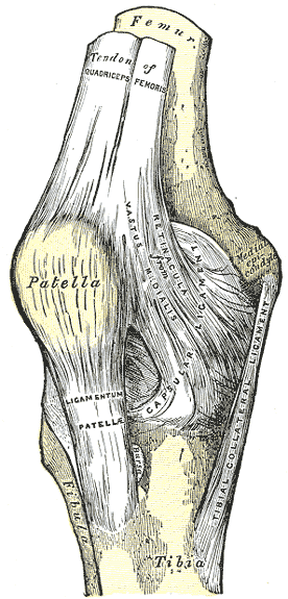PATELLAR TRACKING SYNDROME PATELLO-FEMORAL SYNDROME
In a 1999 issue of The American Family Physician, Dr. Mark Juhn published an article called, Patellofemoral Pain Syndrome: A Review and Guidelines for Treatment. In his article, Dr. Juhn said the following:
Managing patellofemoral pain syndrome is a challenge, in part because of lack of consensus regarding its cause and treatment. Contributing factors include overuse and overload of the patellofemoral joint, biomechanical problems and muscular dysfunction….. Footwear should be closely evaluated for quality and fit, and the use of arch supports should be considered.
Why are we concerned with what Dr. Juhn says here? Probably because his is still considered to be the definitive medical overview of Patellofemoral Pain Syndrome (aka Patellar Tracking Syndrome) — the number one reason that Americans seek out Sports Physicians and Sports Medicine Clinics. A ‘lack of consensus regarding cause and treatment‘. Hmmmm? Sounds rather familiar, does it not?
I agree with much of his assessment. It is certainly true that there are multiple factors that can cause or contribute to this problem. They range from muscle imbalances (usually quads that are overpowering the hamstrings), overuse (usually runners / bikers), OBESITY, poor footwear, poor biomechanics (Q-angle, foot arches, etc), and who knows how many others.
Typical medical treatment for Patellar Tracking Syndrome usually involves rest and stretching / strengthening exercises (not a “bad” way to start, but not the best). Sometimes clinicians have patients use Kiniseo-Taping procedures. Not a bad thing for the short haul, but certainly not a long-term solution. When these things do not work, NSAIDS and CORTICOSTEROIDS are thrown into the mix (dangerous drugs that actually weaken and degenerate the collagen-based tissues while causing a whole host of dangerous and even deadly side effects).
When drugs don’t work for this problem (they never really do), the next step is surgery — a Lateral Release. A Lateral Release is nothing more than cutting the overly tight “Lateral Retinaculum” on the outer portion of the knee cap. What is this “retinaculum” made of you might ask, and what makes it “overly tight“? Great questions that I am glad you thought of!
Retinculum’ are simply a combination of APONEUROSIS (very wide, flat tendons), and Fascia (see our FASCIAL ADHESIONS page). In this case, the Lateral Retinaculum is what connects the Vastus Lateralis (outer portion of the quad muscle or front thigh) to the patella (knee cap). It gets tight for the very reasons mentioned by Dr. Juhn above. But why release it surgically if it can be ‘released’ in another (simpler / cheaper / less painful / less time rehabbing) fashion?
I certainly do not claim to have the answer to all cases of Patellar Tracking Syndrome, but before you spend months in therapy or try a Lateral Release Surgery, see me first. Many of treatment methods mentioned earlier (stretching, strengthening, taping, etc) mentioned above are not bad things to do. However, they are not really effective until the microscopic scarring and underlying adhesion is dealt with first via TISSUE REMODELING — and then you won’t likely need them.
I think back to a young woman who came to see me several years ago. She had not only spent a fortune and gone through years of treatment for Patellar Femoral Pain Syndrome, her doctors were talking about doing a Lateral Release (she was about 18 or 19 at the time). Her mom brought her in to see me, and in all honesty, she was about 80-90% better after just one treatment. Do all cases work like that? Of course not. But, think about it — Fascial Adhesions cause restriction. Restrictions cause pain and DEGENERATION. It is what this whole website is about!
Although non-traumatic restrictions usually have underlying biomechanical causes that must be addressed (flat feet, weak muscles, etc), those can usually be dealt with via specific strengthening exercises, foot orthotics, and proper footwear, etc. Bottom Line: Your problem might be more easily managed than you ever imagined. For more information, see our PATIENT TESTIMONIALS. Also visit our KNEE TENDINOSIS PAGE. And because it is such a common knee problem (particularly in kids), here is our OSGOOD SCHLATTER’S SYNDROME PAGE as well.


